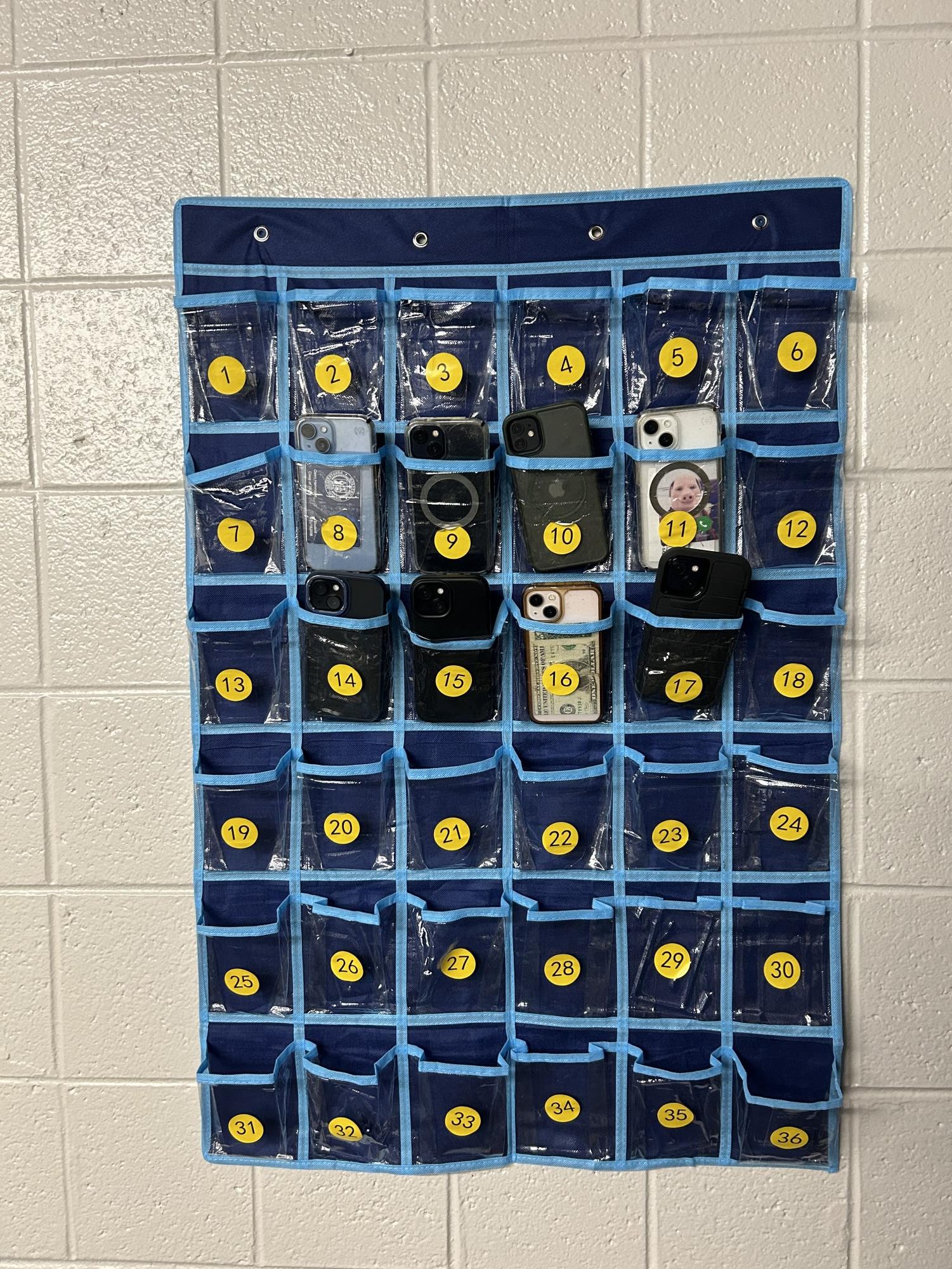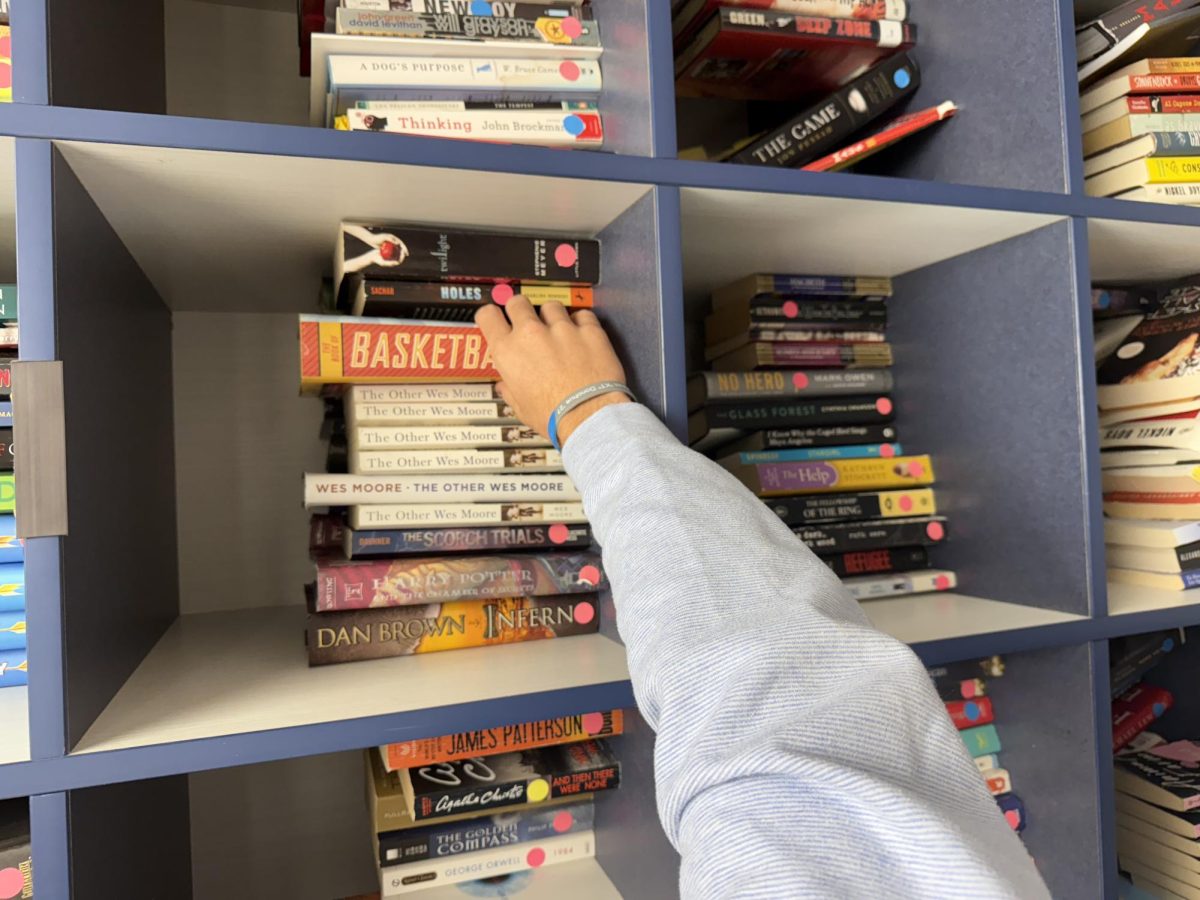Malvern students have spent the first few weeks of school putting their phones into hanging wall-pocketed cubbies at the start of each class in order to avoid students from the temptations of their phones. Not having a phone in one’s pocket or backpack has many benefits, although students may not see it.
Malvern’s administrators put a lot of thought into this ban, and it was really just reinforcing a policy that already existed. Mrs. Folan, Head of Character Development and Wellness, alluded to the fact that this isn’t necessarily a new policy, but rather a reinforced one.
“The policy that was in the handbook had already stated that phones were not to be out in class and causing a distraction in class unless a teacher had allowed it or as part of the lesson. So we didn’t really change much in that aspect,” Folan said.
A universal ban was thought to be much more effective instead of leaving it up to a teacher’s decision. Some teachers would take phones, other teachers would let the students use their phones during class. A large portion of the faculty, including Mrs. Folan read “The Anxious Generation”, which taught them all about the stress and nervousness teens and younger kids experience from being in possession of smartphones.
When a phone is in a pocket it can cause stress and anxiety just to know it’s there, in addition to receiving alerts from various apps that might be distracting it can impact how students learn and focus if they are thinking about that. Something so simple as just putting phones out of reach, sight, and possession relieves that stress. Malvern Upper School Teacher and Malvern alum, Mr. Joe McGrail talked about his thoughts on the stress of phones,
“It feels like you’re missing out on something, but it also adds that kind of extra layer of stress,” McGrail said.
This stress of sorts can be taxing on students’ minds and be something that prevents students from reaching the highest of learning potential. School is stressful enough, so adding another level of stress is not beneficial for students.
The main goal, in eliminating phones during class time, was to help students learn better, and make it easier for teachers to teach. Relieving students of a stress they may not have even realized they had will definitely make it easier for them to learn. Malvern Sophomore Dominic Robustelli discussed how he has felt about the ban so far this year,
“Not having my phone around me during class helps me to focus easier during class and not worry about the outside world and social media,” Robustelli said.
An additional problem with phones is the social aspect of them. The first thing someone does when they see something happen to another person is reach for their phone to take a picture or video. For example, if a student trips and falls, instead of going over to help, kids will just take a picture to send to all their friends. Now that leads to embarrassment and the feeling of needing to be perfect. Also the problems that can be present on social media have become a very prominent thing as well. So keeping the school out of spotlight of social media trends is an added advantage.
Mrs. Folan talked about how Malvern’s middle school implemented this rule full time last year, taking students’ phones away for the whole day, and there was a very positive outcome.
“We went cold turkey in the middle school last year, and it worked really well. Something we did notice is behavior, just typical behaviors are up a little bit during those open times, because people weren’t hiding behind their phones. They had to interact, and that’s okay, because that’s where we learn those social skills,” Folan said.
Mrs. Folan thinks that this class time ban could evolve into a full day removal. Taking phones for the full day will not only help improve learning, but it will also help with social skills and brotherhood. If everybody has their phones out at the lunch table the students aren’t building the same bonds they could build with conversation and talking.
“Honestly, the goal was to test it out, see how it was, and hopefully people actually realize the importance of it and the positive impact, and then maybe move forward,” Folan said.
Alternatively, other teachers’ thoughts about the necessity to remove phones for the full day had mixed responses. There was the theory that removing phones fully would be complicated and beyond the possibilities of the school.
“I think it’s impossible to completely take them from you guys, just communication and safety issues and things like that, all the ways that we communicate nowadays through cell phones, because it’s such a resource. So no, I don’t think they need to be locked away at the beginning of the day, but I definitely like the idea that it’s not going to be something that is out and disrupting during class,” McGrail said.
Phones are such a resource nowadays it makes it really tough to tell somebody they cannot use it. Phones can be used for almost anything from calling a mom to learning how to complete a math problem, which is also an advantage. Upper School Theology teacher, Mrs. Kenworthey talked about how phones are a tool in her class,
“Sometimes, I’ll have them go get their phones because we’re going to do a GimKit or we’re doing something on the phones, so they go get their phone to do whatever,” Kenworthey said.
Another question that can be asked about the devices is whether it is the student or the phones’ fault. How can teenagers be blamed for not resisting the temptation to stare at a screen when the phone’s operating system is built to draw them in. This question was also posed by Mrs. Kenworthey. All the algorithms on any social media apps and all the advertisements are designed to get anyone to spend more time on their devices. The companies want kids, and all people, to spend as much time on their phone as possible in order to make as much money as they possibly can. It is a very big ask to have a teenager not be distracted by their phone. That phone is vying for his attention and his attention is the commodity that companies pay to keep.
Another clear issue similar to phones is laptops. Every form of social media and TV is just as easily accessible from a computer as it is on a phone, however, the openness of a computer makes it slightly easier to resist and crack down on. A teacher can very easily see when someone is on their computer and not paying attention, so it is much easier to combat than the phones are.
There are multiple benefits from students not having their phone on them in class, such as relieving stress, aiding learning, and helping to keep students’ attention during class. At the end of the day students will ultimately realize the help that removing phones brings to them. Learning should be significantly more efficient and a lot easier to pay attention during class due to this removal of phones.













